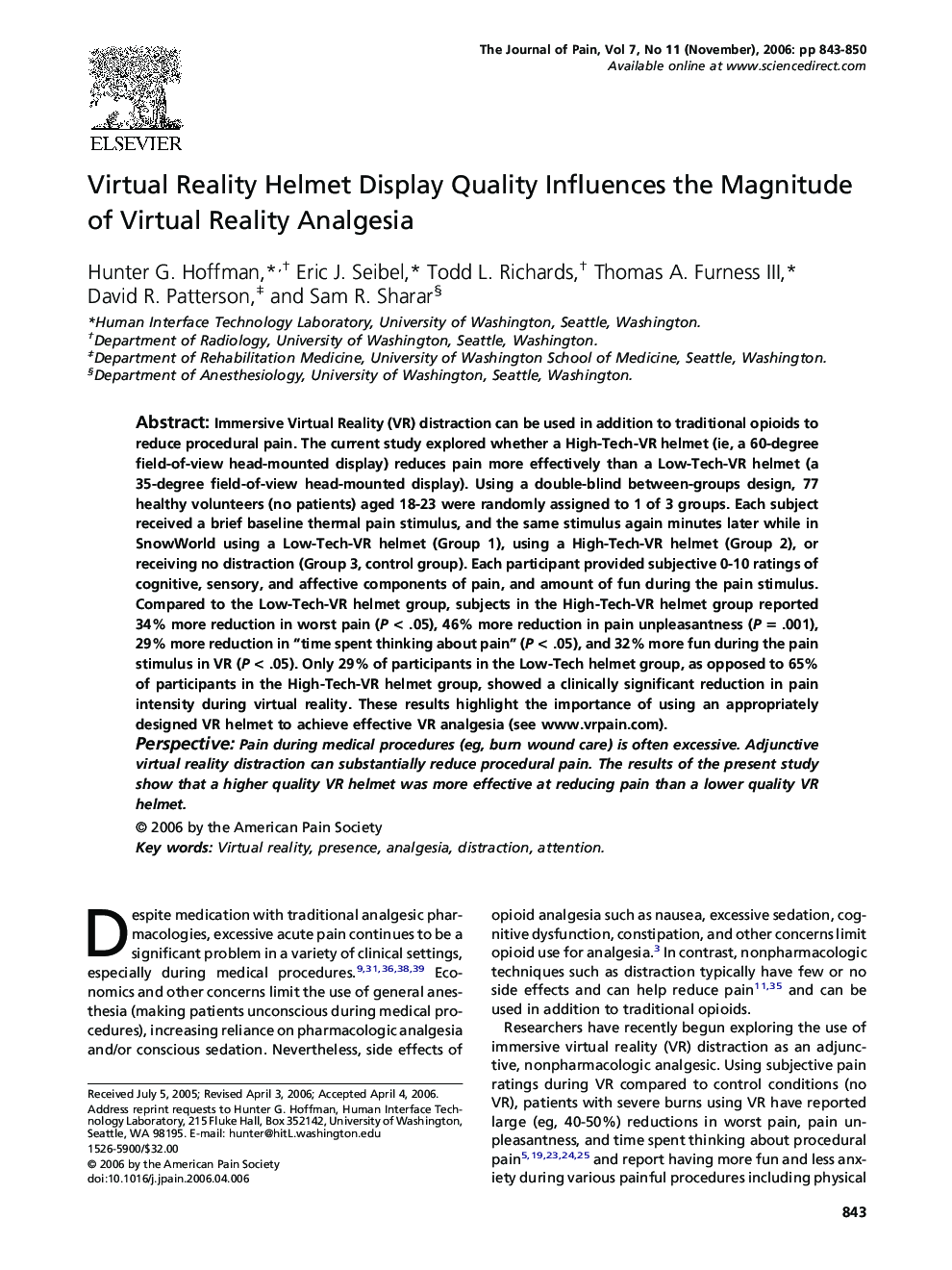| Article ID | Journal | Published Year | Pages | File Type |
|---|---|---|---|---|
| 2729676 | The Journal of Pain | 2006 | 8 Pages |
Immersive Virtual Reality (VR) distraction can be used in addition to traditional opioids to reduce procedural pain. The current study explored whether a High-Tech-VR helmet (ie, a 60-degree field-of-view head-mounted display) reduces pain more effectively than a Low-Tech-VR helmet (a 35-degree field-of-view head-mounted display). Using a double-blind between-groups design, 77 healthy volunteers (no patients) aged 18-23 were randomly assigned to 1 of 3 groups. Each subject received a brief baseline thermal pain stimulus, and the same stimulus again minutes later while in SnowWorld using a Low-Tech-VR helmet (Group 1), using a High-Tech-VR helmet (Group 2), or receiving no distraction (Group 3, control group). Each participant provided subjective 0-10 ratings of cognitive, sensory, and affective components of pain, and amount of fun during the pain stimulus. Compared to the Low-Tech-VR helmet group, subjects in the High-Tech-VR helmet group reported 34% more reduction in worst pain (P < .05), 46% more reduction in pain unpleasantness (P = .001), 29% more reduction in “time spent thinking about pain” (P < .05), and 32% more fun during the pain stimulus in VR (P < .05). Only 29% of participants in the Low-Tech helmet group, as opposed to 65% of participants in the High-Tech-VR helmet group, showed a clinically significant reduction in pain intensity during virtual reality. These results highlight the importance of using an appropriately designed VR helmet to achieve effective VR analgesia (see www.vrpain.com).PerspectivePain during medical procedures (eg, burn wound care) is often excessive. Adjunctive virtual reality distraction can substantially reduce procedural pain. The results of the present study show that a higher quality VR helmet was more effective at reducing pain than a lower quality VR helmet.
